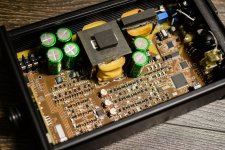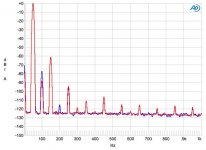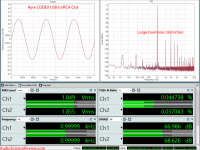A review of the Ayre Codex by Audiosciencereview
I bought an Ayre Codex for myself last year to find out how my own diy efforts, the Sapphire headphone amplifier, would compare to a serious high end product from a serious high end company. I had read the audiosciencereview report above before I decided to buy it, as well as many other online reviews. It did not dissuade me because I had faith in Ayre and their design philosophy. This is only reasonable: the Sapphire shares much of the same design principles of the Codex, and I know from experience that the measurements we make to test audio equipment rarely correlate with perceived sound quality. That the Codex posted some disturbing test scores did not bother me. Put it another way, I've had plenty of gear pass through here that won great praise for measurements but sounded like cr*p...
In the next few posts I'll be providing some annotations to the Codex review based on my own listening experiences, cross-referenced with my thoughts about how the Sapphire sounds in comparison. Expect some soapboxing about Ayre and the commercial hifi industry in general, together with come color commentary on the measurements-vs-listening-tests debate.
Stay tuned!
I bought an Ayre Codex for myself last year to find out how my own diy efforts, the Sapphire headphone amplifier, would compare to a serious high end product from a serious high end company. I had read the audiosciencereview report above before I decided to buy it, as well as many other online reviews. It did not dissuade me because I had faith in Ayre and their design philosophy. This is only reasonable: the Sapphire shares much of the same design principles of the Codex, and I know from experience that the measurements we make to test audio equipment rarely correlate with perceived sound quality. That the Codex posted some disturbing test scores did not bother me. Put it another way, I've had plenty of gear pass through here that won great praise for measurements but sounded like cr*p...
In the next few posts I'll be providing some annotations to the Codex review based on my own listening experiences, cross-referenced with my thoughts about how the Sapphire sounds in comparison. Expect some soapboxing about Ayre and the commercial hifi industry in general, together with come color commentary on the measurements-vs-listening-tests debate.
Stay tuned!


